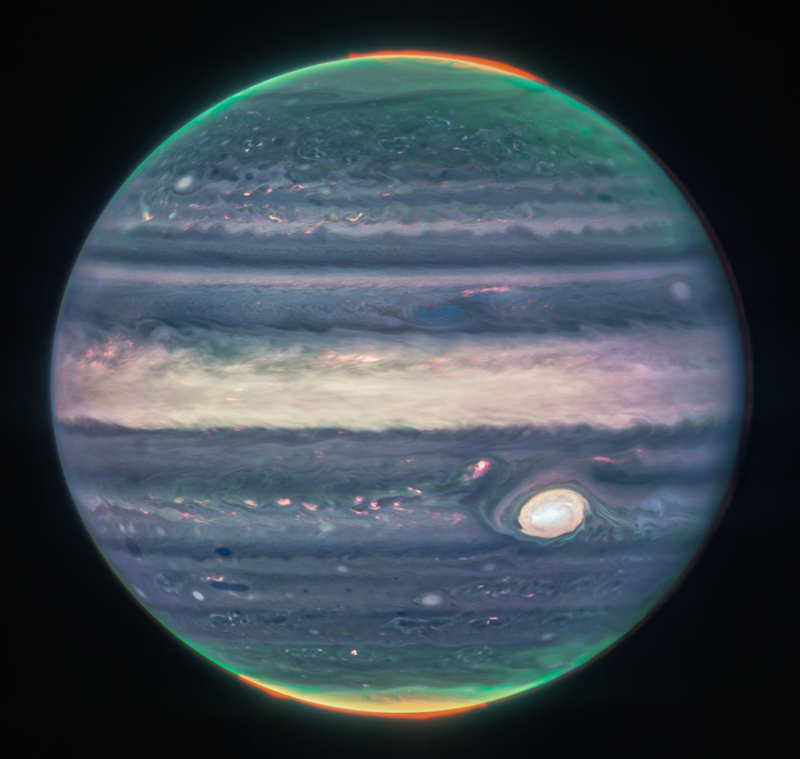For its latest images, the Webb telescope looked closer to home

Enlarge / A Webb composite image of Jupiter from three filters. (credit: NASA, ESA, CSA, Jupiter ERS Team; image processing by Judy Schmidt.)
NASA has released two more images made from data collected by the James Webb Space Telescope, and they reveal incredible detail about the largest planet in the Solar System.
The data used to process the images was captured in late July using the telescope's Near-Infrared Camera, which observes light at wavelengths slightly longer than those at the red end of the visible spectrum. By observing Jupiter at these wavelengths beyond visible light, the powerful space telescope is able to tease details of the planet not previously observed.
One of the photos, in particular, showcases the auroras at both poles that result from Jupiter's powerful magnetic field. The colors in these images are false-because infrared light is invisible to the human eye, the light has been mapped onto the visible spectrum. The auroras shine in a filter that is mapped to redder colors due to their emission of ionized hydrogen.